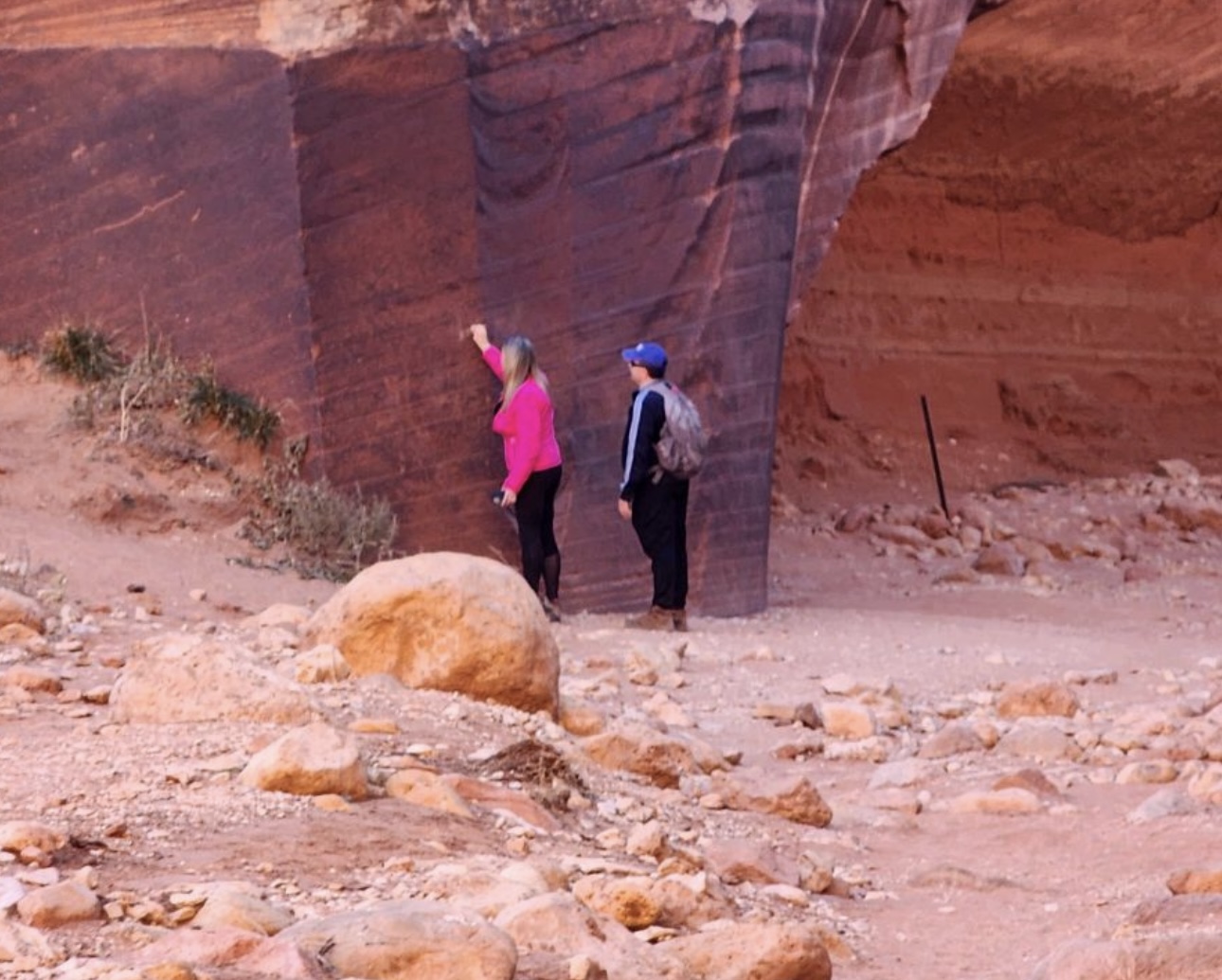Some information may be outdated.
During a normal summer day in Moab you can see the grey slopes of the La Sal Mountains above town, with verdant greens below the treeline offering a contrast to the red rock rim in the foreground. On Sept. 6, however, the mountains faded into a haze of smoke from fires in the region.
On that day, and several other days this summer and early fall, the air quality in Moab reached concerning levels of particulate matter in the air. Although Moab’s Air Quality Index rating never reached “unhealthy” levels (55.5-105.4 micrograms of particulate matter per cubic meter of air), as defined by the Utah Department of Environmental Quality, Moab spent four days this summer at a level defined as “unhealthy for sensitive groups,” (35.5-55.4 micrograms) where people with heart or lung disease, children, older adults, and “people of lower socioeconomic status” should reduce their prolonged or heavy exertion. Moab’s air also spent cumulative weeks with “moderate” air quality (12.1-35.4 micrograms).
“What we’ve seen this year, we have seen an earlier uptick in patients with acute exacerbations of chronic obstructive pulmonary diseases,” said Ray Richens, a registered respiratory therapist at Moab Regional Hospital. “We’ve seen some increase in other fire seasons, but I don’t remember a fire season that’s been this smoky or this bad.”
Moab does not currently have any official regulatory air quality sensors; the closest one is in Canyonlands near the Island in the Sky Visitor Center. This sensor only measures ozone, one of six pollutants the Environmental Protection Agency tracks, along with particulate matter, carbon monoxide, sulfur dioxide, and nitrogen dioxide. Many of these pollutants can come from the same source, such as automobile emissions that produce particulate matter, carbon monoxide, sulfur dioxide, and nitrous oxide, and can indirectly create ozone. Nitrous oxide and other pollutants can actually be precursors to ozone, which, while helpful to reflect solar radiation high in the atmosphere, at low elevations is a harmful pollutant.
However, there are three lower-cost sensors in the Moab area, made by PurpleAir, an international air quality monitoring network. These sensors can measure particulate matter in the air, which provides a decent idea of the overall air quality in a given area. Particulate matter may be composed of tiny particles released from sources like wildfires and gravel pits, but it may also be composed of other pollutants.
The PurpleAir sensors use a laser to measure the light scattered off the particles in the air to measure air quality, rather than the standard sensors the Environmental Protection Agency uses, which draw air through a series of filters and weigh the minute changes as particulate matter sticks to the filter medium. The PurpleAir filters are usually about 97% accurate, according to the South Coast Air Quality Management District, although large events like wildfires or specific sources like mining can throw off the readings. What they can do well is show trends in air quality.
“Don’t take one sensor as being some Armageddon going on, you have to look at the overall network, you’ve got to look at multiple sensors if there are multiple locations, and if they all agree with each other, then there’s something going on,” said Adrian Dybwad, the CEO of PurpleAir.
For Moabites, there are a few online tools to access these sensors. The Fire and Smoke Map from AirNow, an online interactive map from a coalition of government agencies, shows two of the three low-cost sensors in Moab, with a rolling 12 hour average of the air quality. PurpleAir also hosts its own air quality map showing real-time data and averages of different time windows. Residents and visitors can use these tools to determine if it’s safe to go outside or exercise without endangering their health and inform themselves better than simply looking out a window and seeing how hazy it is outside.
“Smoke is very good at refracting light. It can look worse than what you’re actually measuring,” said Jared Mendenhall, the Public Affairs Officer of the Utah Department of Environmental Quality. “Our bodies do a very good job of telling us when we’ve started to reach too much smoke. That is when you actually smell that smell of smoke.”
While short-term exposure to air quality index scores of “moderate” and “unhealthy for sensitive groups” might not harm healthy individuals in the long term, it can severely impact those with heart or lung disease.
Richens estimated that Moab Regional Hospital had a 300% increase in hospitalizations in August and September for “acute exacerbations” of chronic obstructive pulmonary diseases, a group of diseases including asthma, chronic bronchitis, and emphysema. However, longer-term exposure to poor air quality can be dangerous, too.
“What is interesting about particulate matter is the way it affects your health. Most people would think, ‘Oh, it’s going to cause asthma,’ and it can, or ‘It’s going to hurt people who already have reduced lung function,’ and it does. But one of the biggest health effects are cardiovascular disease, so it increases rates of strokes, heart attacks, and premature death. The way that all happens is not well understood,” said Kerry Kelly, an assistant professor of chemical engineering at the University of Utah.
What people can do is keep an eye on the air quality sensors and avoid exercising or strenuous work outdoors when the air quality is bad, especially if they have conditions that might put them at risk. Air quality can change quickly, but by paying attention to conditions, residents should be able to keep themselves safe.
Smoky air tied to more hospitalizations
Appreciate the coverage? Help keep local news alive.
Chip in to support the Moab Sun News.




